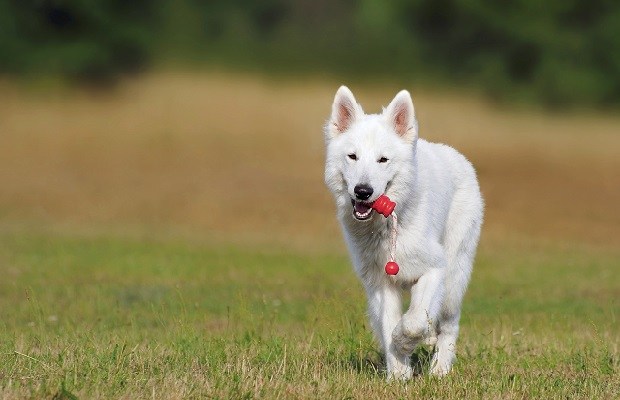Does Your Hospital Blog?
September 18, 2016 By Practice Growth Pras
 Blogging is one of the most effective tools your hospital can use to grow your online presence. Unfortunately, most animal health professionals simply don’t have the time to create blog content with all of their clinic responsibilities.
Blogging is one of the most effective tools your hospital can use to grow your online presence. Unfortunately, most animal health professionals simply don’t have the time to create blog content with all of their clinic responsibilities.
That’s where Doctor Multimedia comes in. We provide blogging services for veterinarians that educate and engage their clients. We can provide a broad range of topics that your clients will enjoy, but will also help your hospital’s presence in the search rankings.
Call us at 1-800-605-6987 today to learn more about our blogging services and for a free consultation. Take a look at one of our blogs below:
At Home Dental Care For Dogs and Cats Between Vet Visits
One of the best things that a pet owner can do to prevent oral diseases in their dogs and cats is to provide regular in-home care between vet visits. Simply put, dogs and cats that receive regular dental care at home rarely have problems once they go to the vet. Brushing of dog’s or cat’s teeth, gums, and tongue takes only a few minutes each day. It’s a small investment that has returns of health and lower veterinarian bills.
Periodontal disease is an infection of the gums due to plaque buildup. When a dog or cat eats their food, especially wet food, a film of bacteria tends to propagate along the gum line. This bacteria attaches to the teeth, hardening over time. The bacteria die and calcify, creating a hard substance called tartar. Just like human plaque, this buildup can accumulate, leading to bad breath, discolored gum lines, as well as threatening the health of the actual teeth. If left to spread, the plaque can cause feline or canine gingivitis, an inflammation of the gums. This is when a vet comes in and professionally cleans the teeth, in the hopes of managing any infection. Sometimes an infection occurs around the base of a tooth, requiring surgery or the removal of teeth. In advanced stages of periodontal disease, the tissue around the teeth, and the sockets are exposed. At this stage, your pet will typically be in excruciating pain as the tooth becomes uncomfortable and loose.
It is recommended that your veterinarian evaluates your growing puppy’s and kitten’s teeth on a regular basis to circumvent any problems when it comes to baby teeth, the formation of extra teeth, or the possibility of missing teeth altogether, which is an occurrence with certain breeds. Once your cat and dog are well into their adult years, your veterinarian should check for developmental problems and the accumulation of plaque buildup. Most of these examinations are done while the cat and dog are awake, but more strenuous examinations may require temporary anesthesia to sedate the animal.
What You Can Do As a Dog and Cat Owner
Brush your dog’s or cat’s teeth on a regular basis. It is recommended that you start brushing your pet’s teeth at a young age, so they can become accustomed to the sensation. Even though the biofilm on the teeth may not be visible at first, like the telltale signs of yellow plaque, biofilm still has a distinct smell to it. Use a small toothbrush that is designed for your pet’s mouth. Sometimes a human toothbrush may be too rough on a dog or cat’s oral cavity, but many have found success in using a small toothbrush with soft bristles, usually those designed for children. You can also offer a toy or treat on a regular basis to reduce the chance of plaque buildup. Certain toys encourage “mouthing,” with teeth being brushed by the physical action of the tooth rubbing against a toy. Some dog treats help scrape off existing plaque, as well as massage the gums.
Do not use human toothpaste under any circumstance on your cat or dog. The chemicals in human toothpaste aren’t agreeable to the biodiversity in your pet’s mouth, exasperating the problem of bad breath. Also certain ingredients in toothpaste can cause an allergic reaction or death. Human toothpaste is simply too abrasive for most animals. Special dog formulated and cat formulated toothpaste aid in the removal of bacteria while freshening the breath. There are also tongue scrapers designed for your pets – however, it is recommended that you allow your veterinarian to take care of removing active plaque on the tooth and gumline. Tongue scrapers are designed to scrape the plaque buildup on the gum line, however, it can potentially puncture your pet’s gum line, especially if they are particularly feisty.
Make sure to always offer fresh water every day. Bacteria thrives in moist and wet conditions, making your pet’s water bowl the perfect breeding ground. There are certain solutions that you can also put into the water to help freshen your pet’s breath, however, your dog or cat may not agree with its taste. Gum health for dogs at home tends to be a bit easier to manage, since most dogs like to naturally chew on things. Dental toys and treats can help alleviate chronic problems as a dog chews on them all day.
For a quick cleanup, you can use pads or wipes to cleanse the gum line. This is particularly effective for feisty cats who may not want to stay put during a complete toothbrushing session. Wiping their teeth and gum line will remove food particles that can worsen biofilm and plaque buildup. Most of these gauze and pads are fixed on your finger, allowing you to easily wipe the gum line.
Remember to introduce toothbrushing to your pet slowly, especially if you haven’t introduced toothbrushing to them at an early age. The key is to be slow, consistent, and increase toothbrushing sessions by small increments. At first you may only be able to swipe a couple of teeth before your dog or cat become tiresome, but after time they will be open to it, even enjoying the toothbrushing sensation.



